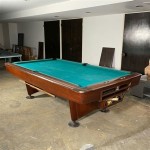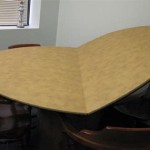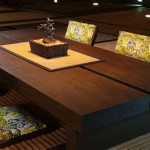Folding Outdoor Side Table Plans: A Comprehensive Guide
The folding outdoor side table represents a practical and adaptable furniture solution for patios, decks, balconies, and even camping trips. Its inherent portability and space-saving design make it a valuable addition to any outdoor setting. This article provides a comprehensive overview of considerations, planning steps, and construction techniques associated with building a folding outdoor side table from scratch, using readily available plans or adapting existing designs.
Before embarking on the construction process, a thorough assessment of needs and limitations is paramount. Factors such as desired size, material selection, intended use (e.g., holding drinks, supporting plants, serving snacks), and skill level will all influence the final design and construction methods employed. Understanding these initial parameters ensures a successful and satisfying project outcome.
Key Considerations Before Starting
Several crucial decisions must be made before commencing the construction of a folding outdoor side table. These decisions affect the table's functionality, aesthetics, and longevity. Addressing these concerns upfront will streamline the building process and prevent potential issues later on.
Material Selection: The type of wood used will significantly impact the table's durability and resistance to weather. Pressure-treated lumber is a common choice for outdoor furniture due to its resistance to rot, decay, and insect infestation. However, it often has a less refined appearance. Cedar and redwood are naturally weather-resistant and offer a more aesthetically pleasing look, though they typically come at a higher cost. Hardwoods like teak and ipe are extremely durable and beautiful, but they are also significantly more expensive and require specialized tools for working with them. The choice should balance cost, durability, and desired appearance. Consider the availability of the chosen material in your local area as well.
Size and Dimensions: The size of the table should be proportional to the intended use and the available space. A small side table might suffice for holding a single drink, while a larger table would be necessary for serving snacks or meals. Consider the height of the chairs or other seating arrangements that the table will accompany. A table that is too low or too high will be uncomfortable to use. Folding mechanisms typically add some bulk to the table's dimensions when folded, so account for this when determining the overall size. Creating a simple mockup out of cardboard can help visualize the finished product and ensure it meets size requirements.
Folding Mechanism: The folding mechanism is the heart of the design. Numerous options exist, ranging from simple hinges to more complex pivoting structures. The chosen mechanism should be robust and easy to operate. Simple hinges are suitable for basic folding designs, while more elaborate mechanisms might be necessary for tables that fold completely flat or have adjustable heights. The mechanism must also be appropriately sized and rated to support the weight and anticipated use of the table. Researching different folding mechanisms and understanding their strengths and weaknesses is essential for selecting the most suitable option.
Planning and Design
Once the fundamental considerations have been addressed, the next step involves detailed planning and design. This phase involves selecting or creating plans, gathering necessary materials and tools, and preparing the workspace.
Sourcing or Creating Plans: Numerous free and paid plans for folding outdoor side tables are available online and in woodworking publications. These plans typically provide detailed instructions, dimensions, and material lists. Alternatively, individuals with woodworking experience may choose to design their own tables. When selecting plans, ensure they are clear, concise, and include all necessary information. If designing a table from scratch, careful consideration should be given to the structural integrity and stability of the design, especially when folded. Software applications designed for CAD and 3D modeling can be helpful in visualizing and refining the design.
Material Acquisition: Once the plans are finalized, a comprehensive list of materials should be compiled. This list should include the type and quantity of wood, fasteners (screws, bolts, nails), hinges, and any finishing products. Purchasing materials from reputable suppliers ensures quality and longevity. It is often advantageous to purchase slightly more material than specified in the plans to account for potential errors or waste during the construction process. Inspect all materials for defects before beginning construction.
Tool Preparation: A well-equipped workspace is essential for efficient and safe construction. Basic tools required for this project typically include a saw (circular saw, miter saw, or hand saw), drill, screwdriver, measuring tape, square, pencil, sandpaper, and safety glasses. Depending on the complexity of the design and the type of wood used, more specialized tools such as a router, planer, or wood joiner may be necessary. Ensure all tools are in good working order and properly sharpened. Following safety protocols when using power tools is paramount.
Construction Techniques and Assembly
The construction phase involves cutting, shaping, assembling, and finishing the various components of the folding outdoor side table. Accuracy and attention to detail are crucial for achieving a professional-looking and functional finished product.
Cutting and Shaping: Follow the dimensions specified in the plans to accurately cut the wood pieces to size. A miter saw is ideal for making precise angled cuts, while a circular saw can be used for straight cuts. For intricate shapes or curves, a jigsaw or bandsaw may be required. Sanding the cut edges smooth prevents splinters and improves the overall appearance. A router can be used to create decorative edges or to round over sharp corners. Always wear safety glasses and a dust mask when cutting and shaping wood.
Assembly: Assemble the table components according to the instructions provided in the plans. Use appropriate fasteners (screws, bolts, nails) to securely join the pieces together. Pre-drilling pilot holes before inserting screws or nails prevents the wood from splitting. Wood glue can be used in conjunction with fasteners to create stronger and more durable joints. Ensure all joints are aligned properly and square before tightening the fasteners. Clamps can be used to hold pieces together while the glue dries. Pay close attention to the alignment of the folding mechanism to ensure smooth and reliable operation.
Finishing: Applying a finish to the table protects the wood from the elements and enhances its appearance. Several options are available, including paint, stain, varnish, and sealant. The choice of finish depends on the type of wood used and the desired aesthetic. Before applying the finish, thoroughly sand the entire table to create a smooth surface. Apply the finish in thin, even coats, allowing each coat to dry completely before applying the next. Follow the manufacturer's instructions for application and drying times. Apply multiple coats for increased protection. Consider using a UV-resistant finish to prevent fading and discoloration from sunlight exposure. A polyurethane varnish provides a durable and waterproof finish.
Addressing Common Challenges: During construction, several challenges may arise. Wood may warp or crack, joints may not align perfectly, or the folding mechanism may not operate smoothly. To address these challenges, careful planning and attention to detail are essential. If wood warps, it may be necessary to replace it or attempt to straighten it using clamps and moisture. If joints do not align properly, shims can be used to fill gaps. If the folding mechanism does not operate smoothly, check the alignment of the hinges or pivots and adjust as necessary. Applying lubricant to the moving parts can also improve operation.
Safety Precautions: Throughout the construction process, adhering to safety precautions is paramount. Always wear safety glasses to protect the eyes from flying debris. Use a dust mask to avoid inhaling sawdust. Wear hearing protection when operating power tools. Keep the workspace clean and organized to prevent accidents. Disconnect power tools from the electrical outlet when not in use. Store flammable materials in a safe and appropriate container. Familiarize yourself with the operating instructions and safety guidelines for all tools used. If unsure about any aspect of the construction process, consult with an experienced woodworker.

Round Outdoor Adirondack Side Table Ana White

Build A 2x4 Outdoor Table With Available Plans Girl Just Diy

Small Outdoor Coffee Table Rogue Engineer

Shine Company Adirondack Burnt Brown Round Wood Outdoor Side Folding Table 4108bb The Home Depot

20 Diy Outdoor Table Ideas For Your Deck Or Patio The Handyman S Daughter

Diy Outdoor Coffee Table With Planter Remodelando La Casa

Modern Outdoor Side Table Free Diy Plans Myoutdoorplans

A L Furniture Co Outdoor Folding Oval End Table Rocking

How To Build An Outdoor Octagon Coffee Table With Lattice Legs

Diy Side Table Plans Howtospecialist How To Build Step By








